What's New
Displaying results 2071 - 2080 of 4911
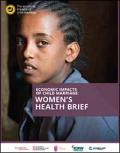
Resource | Publications,
While child marriage is widely considered a human rights issue closely connected to gender inequality, the significance of the practice’s impacts at both the individual and societal levels suggests that ending child marriage may play an important role in alleviating poverty and in promoting economic development. To date, however, there has been relatively little in the way of rigorous assessment of the economic impacts of child marriage or how much child marriage may "cost" countries and societies.
This brief summarizes results from an analysis of the impacts of child marriage on a few selected health outcomes, specifically early childbirths, maternal mortality and intimate partner violence. It does not include analyses for other aspects of women’s health that are likely to be affected by child marriage to various extents, such as maternal morbidity, obstetric fistula, female genital mutilation/cutting, sexually-transmitted infections (including HIV and AIDS) and psychological well-being.
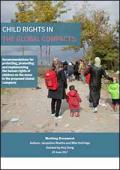
Resource | Publications,
The New York Declaration for Refugees and Migrants is an important reaffirmation by Heads of State and Government and High Representatives of their intention “to fully protect the human rights of all refugees and migrants, regardless of status”. A key outcome of the Declaration is the creation of two new Global Compacts, one on refugees and one on migrants. These Global Compacts, to be agreed by government representatives at the United Nations (UN) in 2018, will articulate common commitments in respect of the protection of refugees and migrants.
This working document by the Initiative for Child Rights in the Global Compacts, a multilateral initiative supported by 26 organizations, sets out what these protection and inclusion measures entail with respect to six priority issues involving refugee and migrant children (sometimes referred to collectively as “children on the move”) and what provisions it would consequently be appropriate to include in the two Global Compacts.
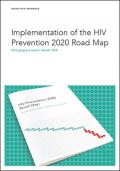
Resource | Publications,
This first progress report shows that members of the Global HIV Prevention Coalition have mobilized around strengthening HIV primary prevention. There are clear signs of renewed political commitment and strengthened institutional arrangements for planning and managing prevention programmes. Most member countries have moved fast to develop HIV prevention action plans, and there are many examples of excellent and innovative new initiatives. Furthermore, interest in the HIV prevention agenda and the Global HIV Prevention Coalition is growing. A global accountability process has been set up, with score cards that track progress across a range of high-priority prevention programme areas.
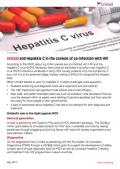
Resource | Publications,
According to the WHO, about 2.3 million people are co-infected with HIV and the hepatitis C virus (HCV). Moreover, there were an estimated 1.75 million new hepatitis C virus (HCV) infections worldwide in 2015. HCV usually presents only mild symptoms, if any, until it is at an advanced stage, thereby making it difficult to recognize the disease early.
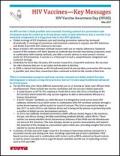
Resource | Fact Sheets,
An HIV vaccine is both possible and essential. Existing options for prevention and treatment must be scaled up to bring down rates of new infections, but a vaccine is an essential component of a long-term end to the HIV epidemic.
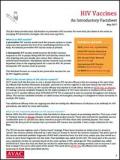
Resource | Fact Sheets,
A preventive HIV vaccine would teach the immune system to create responses that prevent the virus from establishing infection in the body. No licensed preventive HIV vaccine exists at present.
A therapeutic HIV vaccine would improve the body’s immune response to HIV in people living with HIV and thereby reduce their risk of getting sick and, ideally, also reduce their reliance on antiretroviral treatment. Therapeutic vaccine research may provide important clues to the ongoing search for a cure for HIV. No proven therapeutic HIV vaccine exists at present.
This factsheet focuses on research into preventive vaccines for use by HIV-negative people.
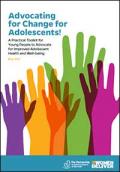
Resource | Tools,
This toolkit was developed by young people, for young people, to be used by networks of youth-led and youth-serving organizations to change the world! The toolkit will also be useful for others, including civil society groups, government departments and everyone concerned with adolescent health and well-being.
The purpose of this toolkit is to guide the design, implementation and monitoring of an effective national advocacy action roadmap to bring about positive policy-specific changes to improve the health and well-being of adolescents.
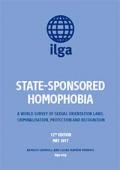
Resource | Publications,
The fundamental purpose of producing ILGA's annual State Sponsored Homophobia publication is to compile information on the world’s laws that are relevant to sexual orientation in one place. In addition to ILGA’s membership of around 1300 SOGIESC-related organisations, this publication is primarily designed to provide a body of accurate and credible reference sources to researchers, human rights defenders, agencies, organisations, institutions and allies.
Building on the authorship of previous editions, this year the publication provides significantly more comprehensive coverage of each State where specific sexual orientation law pertains. Through the use of hyperlinks (in red font throughout) rather than footnotes, the digital form of this publication connects to a substantial body of primary and secondary sources.

Resource | Publications,
This year marks the 25th anniversary of the Mainline Foundation, and this provides an opportunity to reflect on twenty-five years of harm reduction.
Our mission to reduce the number of HIV infections among drug users through education – the purpose of Mainline’s establishment in 1991 – has been achieved. Or at least the number of HIV infections is no longer on the rise, and most users have a roof over their head. But the fringes of this phenomenon remain. Crystal meth is slowly seeping into the Netherlands. GHB is being quietly used in the provinces. And freebase cocaine dealers are still doing a roaring trade each week when those who depend on drugs receive their allowance from the budget-maintenance service. And abroad, where Mainline is also active, improving the legal status of people who use drugs remains high on the agenda.
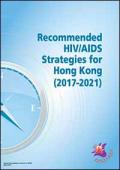
Resource | Publications,
This document is the fifth set of strategies developed by the Hong Kong Advisory Council on AIDS (ACA) since 1994. The process of its formulation adopted a wide-based approach of engaging different parties, including Community Stakeholders’ Consultation and gathering the input of individuals, groups and organizations as well as the general public during the subsequent public consultation.
Hong Kong has fortunately maintained a low HIV infection rate for 3 decades since the first reported case in 1984. The Government, NGOs, the community and other stakeholders work collectively on a comprehensive AIDS programme which encompasses surveillance, health promotion and HIV prevention, treatment and care, and is underpinned by policy-setting and programme funding.
The objectives laid down in the Strategies are in line with the 90-90-90 treatment targets together with the 90% coverage of HIV combination prevention services set by the UNAIDS.





